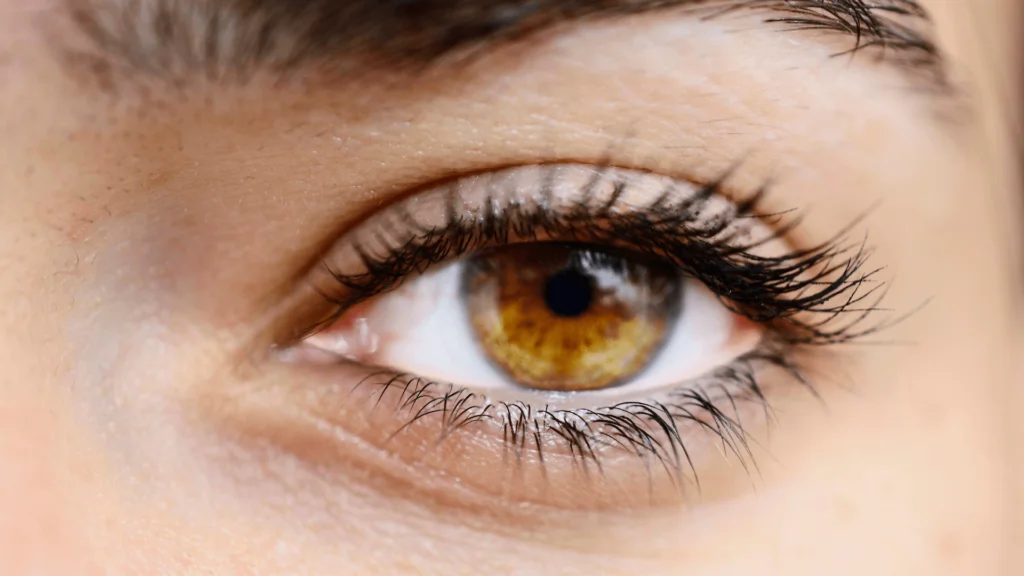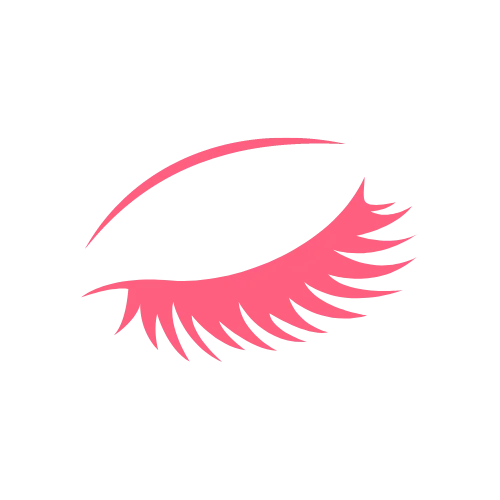Table of Contents
Long, luscious eyelashes are a highly coveted feature, often seen as a marker of beauty and femininity. Achieving fuller lashes is a common desire, leading many to seek ways on “How to Make Eyelashes Grow”. Eyelashes, like other hair on the human body, have a specific growth cycle, and understanding this can be critical to fostering their growth. Factors like genetics and age play a role in their length and volume, but there are steps one can take to support and potentially increase the growth of eyelashes, specifically by exploring “How to Make Eyelashes Grow” effectively.
Using the right ingredients and products can be pivotal in eyelash care. For instance, products with peptides, argan oil, and biotin are often recommended for their potential benefits to lash health. Daily care routines, including gentle cleansing and conditioning, can also protect and strengthen eyelashes. In addition to at-home care, there are professional treatments and over-the-counter options available that can provide more dramatic results. Moreover, lifestyle choices and a nutrient-rich diet can positively impact not just eyelash growth, but overall hair health.
Key Takeaways
- Fuller eyelashes can be achieved by understanding their natural growth cycle and using targeted treatments.
- Specific ingredients and a proper daily eyelash care routine can promote lash health and strength.
- Professional treatments and maintaining a healthy lifestyle contribute to the vitality and growth of eyelashes.
Understanding Eyelash Growth
Eyelash growth is a natural process involving a specific growth cycle and distinct anatomical features. Thorough knowledge of the lash anatomy and its growth phases is essential for understanding how eyelashes grow and regenerate over time and what is needed to enhance this process effectively. Learning “How to Make Eyelashes Grow” can provide insight into maximizing the potential of your natural lashes, guiding you through the best practices and nurturing methods to achieve longer, fuller lashes.

Eyelash Anatomy
Eyelashes are terminal hairs with three key parts: the shaft (visible part), the root (embedded within the skin), and the follicle (the structure beneath the skin that produces the hair). Each eyelash is anchored to the eyelid by a hair follicle. These follicles are rich in blood vessels which supply the necessary nutrients for hair growth.
Growth Cycle
The growth cycle of an eyelash consists of three stages: anagen, catagen, and telogen.
- Anagen (Growth Phase): During this phase, eyelashes are actively growing, and this period can last between four to six weeks. The length and quality of the anagen stage determine the final length and strength of the eyelashes.
- Catagen (Transition Phase): This is a short phase, lasting two to three weeks, where growth stops, and the follicle shrinks. If an eyelash falls out or is plucked during this time, it won’t start growing back until this phase is completed because the follicle needs to complete its cycle.
- Telogen (Resting Phase): The final phase can last more than three months, and during this stage, the hair doesn’t grow. The eyelash will eventually shed naturally at the end of the telogen phase, making way for a new hair to begin its cycle in the anagen phase.
Understanding these stages and the importance of each part of the eyelash can better inform methods for supporting and optimizing eyelash growth.
Effective Ingredients for Lash Growth
Selecting the right ingredients is crucial for promoting lash growth. From natural oils to specialized serums, certain components can enhance the length and thickness of eyelashes.
Natural Oils
Castor oil is celebrated for its ability to moisturize and strengthen lashes, owing to its high fatty acid content. Coconut oil is another beneficial oil that provides protein and nutrients to help lashes appear longer and fuller. Argan oil, known for its high vitamin E and fatty acid composition, also nurtures lash follicles for improved health and growth.
Growth Serums
Eyelash growth serums often contain bimatoprost, an active ingredient approved for lash growth. Products like Latisse have been clinically proven to extend the growth phase of lash follicles. Peptide-rich serums are another option, as peptides are key building blocks that support and fortify lashes, enhancing their overall density and length.
Vitamins and Nutrients
Lashes benefit significantly from a diet rich in vitamins and nutrients. Biotin, or vitamin B7, is integral for hair growth, supporting lash strength and durability. Similarly, vitamin E acts as an antioxidant that helps protect and repair hair follicles. Including these vitamins in one’s diet or through direct application can greatly improve the health of eyelashes. Additional supplements specifically designed for hair and lash growth may provide a comprehensive mix of these essential nutrients.
Daily Eyelash Care
Maintaining the health of your eyelashes requires daily attention. Focusing on gentle cleansing, careful handling, and proper moisturizing can promote stronger and potentially longer natural lashes.
Proper Cleansing
Daily removal of makeup is crucial to keeping eyelashes healthy. Use a makeup remover specifically designed for the eyes to dissolve mascara efficiently without harsh rubbing. For those who wear waterproof mascara, an oil-based remover is typically more effective. After using remover, a gentle soap should be applied with a soft touch to ensure no residues are left behind.
Gentle Handling
Eyelashes are delicate, and rough treatment can lead to breakage or loss. While cleaning or touching your eye area, it’s essential to be as gentle as possible. Avoid excessive touching or pulling, which can strain the hair follicles of your natural lashes. When applying or removing makeup, it’s advisable to use a light hand to minimize damage.
Moisturizing Techniques
Keeping eyelashes moisturized can help improve their appearance and health. Ingredients like olive oil can be applied to the lashes with a clean mascara brush to nourish them. Additionally, occasional brushing with a clean, dry spoolie can help distribute natural oils along the length of the lashes. Remember that hydration starts within, so it is important to drink plenty of water to support overall hair health.
Professional and Over-the-Counter Solutions
For individuals seeking fuller, longer lashes, there are both professional treatments and over-the-counter products available. These solutions range from prescription medications to lash serums endorsed by dermatologists for efficacy and safety.
Prescription Treatments
Prescription lash serums contain active ingredients that have been evaluated by the FDA. A notable example is bimatoprost, a medication that extends the growth phase of eyelashes when applied topically. Prescribed by a doctor or a dermatologist, this treatment can yield noticeable results in eyelash growth. However, users should be aware of potential side effects, which can include eye irritation, darkening of the skin around the eyes, and, more rarely, changes in the color of the iris.
OTC Serums and Conditioners
Over-the-counter eyelash growth serums and conditioners offer a non-prescription alternative to boost lash health. These products generally contain peptides, vitamins, and natural extracts to nourish and strengthen lashes. While not as potent as prescription treatments, many users report improved lash appearance with consistent use. OTC serums and conditioners should still be chosen with care, considering the product’s safety and the reputation of the brand.
Join us as we explore the ins and outs of each serum in our article 10 Best Eyelash Growth Serums in 2024 comparing their ingredients, effectiveness, and user experiences to help you make an informed decision for your eyelash care routine in the upcoming year.
Eyelash Extensions and Enhancements
For immediate results, eyelash extensions are a popular option applied professionally at salons. Synthetic fibers are attached to each natural lash, instantly creating the appearance of fuller lashes. While extensions don’t grow lashes, they offer a temporary solution for special occasions. To maintain the health of natural lashes, it’s important to follow the salon’s care instructions and schedule regular touch-ups to prevent damage. Lash enhancements, such as tinting or lifting, provide additional options for those looking to accentuate their natural lashes without extensions.
Lifestyle and Diet for Healthy Lashes
The pursuit of healthy eyelashes is influenced significantly by one’s lifestyle choices and dietary habits. Optimal lash growth is often achievable through specific nutrition and by avoiding damaging behavior.
Nutritional Considerations
A healthy diet plays a pivotal role in the condition of eyelashes. Intake of foods rich in biotin, such as eggs, almonds, and whole grains, can contribute to stronger hair and, by extension, eyelashes. Additionally, consuming iron-packed foods like spinach, legumes, and red meat supports lash health, potentially preventing hair loss and alopecia.
The inclusion of antioxidants can also bolster lash strength and growth. Sipping on green tea, known for its beneficial polyphenols, might contribute to the vitality of eyelashes. Biotin supplements, though not strictly necessary if dietary intake is adequate, can provide an extra boost to those whose diets might lack sufficient nutrients.
Avoiding Harmful Practices
Maintaining healthy eyelashes isn’t solely about what one adds to their diet but also what habits they abstain from. Vigorous rubbing of the eyes can lead to premature lash loss and should be avoided. As tempting as it might be, consistently pulling or tugging at eyelashes can cause damage and thinning over time.
The application of natural substances like aloe vera can be beneficial, but one should be cautious of commercial products that may contain irritants or allergens. It’s vital to thoroughly research ingredients in eyelash growth serums and consult a healthcare provider when considering new supplements or treatments for lash health.
Frequently Asked Questions
In this section, we address some common queries about eyelash growth, focusing on natural remedies, proven methods for enhancing length and thickness and understanding the factors affecting eyelash regrowth.
What are natural remedies for enhancing eyelash growth?
Individuals often seek natural remedies to improve eyelash growth, such as applying oils like castor or argan oil, which nourish the lashes, potentially leading to enhanced growth.
What can I do to make my eyelashes grow longer and thicker?
For longer and thicker eyelashes, one can use specific serums that contain active ingredients like bimatoprost, which prolongs the growth phase of the hair follicle. Additionally, maintaining a gentle cleansing routine is essential to prevent damage to the lashes.
Is it possible to accelerate eyelash growth, and if so, how?
Accelerating eyelash growth is possible by using eyelash growth serums that contain peptides and other beneficial ingredients to stimulate the hair follicles. A nutritious diet rich in vitamins and proteins also supports overall hair health, including lashes.
Are there any effective methods to grow eyelashes in a short period, such as a week?
Rapid eyelash growth within a week is unlikely; however, temporary solutions like tube mascara can make lashes appear longer. For actual growth, consistency with growth serums and a healthy lifestyle over time will yield the best results.
How does Vaseline influence eyelash growth?
The application of petroleum jelly (Vaseline) may help eyelashes stay moisturized and prevent breakage, but no scientific evidence suggests it directly accelerates eyelash growth.
Can eyelashes regenerate after being pulled out, and what affects their regrowth?
Eyelashes can regenerate after being pulled out, although the regrowth rate varies depending on factors like the individual’s age and health. It is essential to avoid harsh treatments to the eye area to allow natural regrowth.
Medical Advice Disclaimer:
Please note that the information provided in this article, including recommendations and insights, is for informational purposes only and should not be taken as medical advice. While efforts are made to ensure the accuracy and completeness of the information, it is important to consult with a qualified healthcare professional or physician before making any decisions based on the content of this article. The information provided does not substitute for professional diagnosis, treatment, or advice. Always seek the advice of your physician or another qualified health provider with any questions you may have regarding a medical condition or treatment and before undertaking a new health care regimen. Do not disregard professional medical advice or delay in seeking it because of something you have read in this article.


Leave a Reply